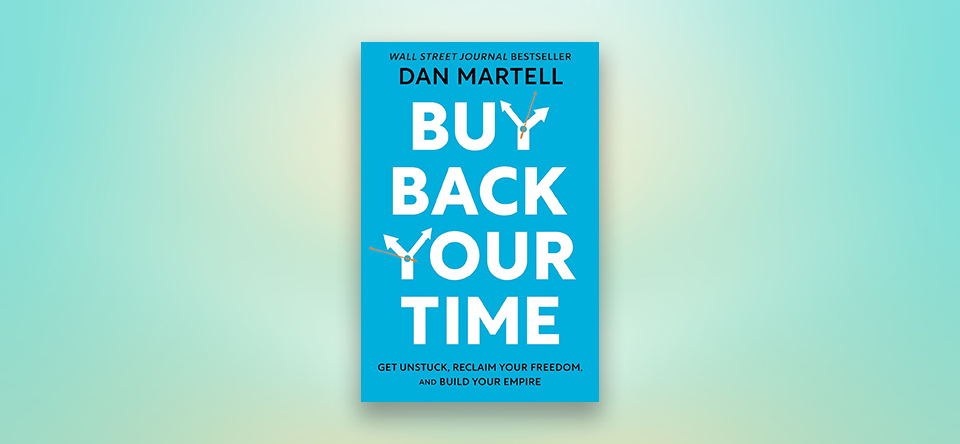Issue 027: How Melissa Kwan Hit $1M ARR With Zero-Dollar Marketing Strategies, The 5 “Time Assassins” That Sabotage Entrepreneurial Success, and More

March 19, 2025 | #027 | Free Version
Welcome to Startup Blitz, a weekly newsletter full of timeless ideas and insights you can use in your online business.
👑 How Melissa Kwan hit $1M ARR with zero-dollar marketing strategies
🔬 The most scientifically effective way to do defensive SEO
🥷 5 “Time Assassins” that sabotage entrepreneurial success
Not subscribed? Learn more and sign up.
The Zero-Dollar Marketing Strategies That Took Melissa Kwan to $1M ARR

Melissa Kwan is the co-founder and CEO of eWebinar. It’s a SaaS platform that lets you deliver automated webinars for sales demos, onboarding, and training.
The most surprising part of her journey? Her expensive marketing efforts didn’t generate any results. They were mostly a waste of money.
Instead, the strategies that helped her reach $1 million cost nothing. Her success came from zero-dollar marketing strategies.
Let’s take a look at her journey.
(based on her LinkedIn posts and interviews)
How She Acquired Her First 100 Customers
Kwan followed a simple approach to land her first 100 paying customers:
1. List Potential Customers
She created an Excel sheet listing everyone she knew who might benefit from the product. This included past colleagues, clients, and companies she’d interacted with. She added the company name, her contact person, their email, and the industry.
2. Reach Out Before Launch
Two weeks before the launch, she emailed or texted everyone on her list. She explained what she was building and offered to hop on a call to demo the product. For 10 weeks, she conducted 20–40 demos every week.
3. Ask for Referrals
If someone liked the product, she asked them to introduce her to others who might benefit from it.
This simple strategy helped her secure her first 100 paying customers.
But then, she hit a wall. With her personal network exhausted, she turned to other marketing strategies.
None of them worked.
The Costly Marketing Mistakes She Made on Her Way to $1M ARR
1. Launching on Product Hunt
She spent two months preparing and paid a $7,500 consulting fee for her Product Hunt launch. She made it to the top 3. But only acquired one customer.
According to Kwan, Product Hunt works best for free consumer products. Her B2B product with no free version wasn’t a good fit.
2. Paid Ads
With paid ads, you’ve to compete with big companies that have massive budgets. It often doesn’t make sense for startups to go head-to-head with them.
3. Cold Email
Her product costs only $100/month. People typically don’t buy low-ticket products through cold outreach. it works better for $10K–$100K deals.
4. LinkedIn Outreach
Since cold email didn’t work, she decided to try LinkedIn messages. She thought it might be a more effective way to get a response.
But she was wrong. People were offended. Some even cursed at her and accused her of misusing LinkedIn for sales. She gave up after four weeks.
5. Affiliates & Partnerships
She spent $130K testing affiliate programs. It generated less than $500/month in revenue.
According to Kwan, she was too early with affiliate marketing. It works best for brands people already recognize. An unknown company won’t succeed with affiliate programs.
9. Newsletter promotion
She also ran a Black Friday deal with a newsletter sent to 250K people. It resulted in 18 trial sign-ups. No one converted.
The Zero-Dollar Marketing Strategies That Worked
1. Referrals
She asked friends and existing customers to introduce her to others who might find the product useful. She even sent them a forwardable email they could use for introductions.
2. Directories
She submitted eWebinar to 40+ directories. According to Kwan, directories make a company searchable, give it credibility, and are great for backlinks.
3. Review Sites
Review sites rank high in search results. It is also where prospects do their research. Anytime someone said they loved the product, she asked them to leave a review.
4. Case Studies
She asked her most enthusiastic customers about their experiences before and after using the product. She recorded those interviews and shared them on her website and YouTube.
5. Sharing on LinkedIn
She posts 3–5 times per week on LinkedIn. She spends 3–6 hours writing and editing each post.
As a result, LinkedIn drove 20% of her demo requests.
6. Podcast Interviews
She tries to guest on a podcast almost every week. A big percentage of her users sign up after hearing her interviews.
To book these spots, she sends 15–20 pitches per week to various podcasts. She just asks if they’d like to have her on the show. Podcasts always need content. So many say yes.
7. SEO & content
Over two years, she created 40 optimized pieces of content. As a result, 50% of demo traffic came from organic search.
8. Co-Marketing
She co-created templates, guest posts, and webinars with people who had large audiences. These were shared on both sides.
With these strategies, she was able to reach $1M in annual recurring revenue in just 36 months.
- You can visit the eWebinar website from here.
- You can follow Melissa Kwan on LinkedIn.
- You can also subscribe to her Substack newsletter.
🔬 Scientific Research: The Best Way to Do Defensive SEO

But according to Elena Verna, that playbook no longer works. Google has changed. It’s not sending as many visitors as they were used to. It now directs more users to paid ads and tries to keep the rest on its site with AI-generated answers.
So what hope is there for smaller businesses?
According to PostHog, it’s a very good defensive tactic to have posts like these on your blog:
- The best tools in your product category
- Comparisons between your product and competitors
- How to integrate your product with other popular ones
If you don’t create these posts, your competitors will. You don’t want prospects learning about you from your competitors.
Make the list as long as possible. According to a recent scientific study, when the rank length is longer, people view the top items more positively. It also increases their willingness to pay.
But don’t oversell your product. Instead of claiming it’s the best, focus on how it’s different.
📖 Book of the Week: The 5 Time Assassins

This week, I want to highlight Buy Back Your Time: Get Unstuck, Reclaim Your Freedom, and Build Your Empire by Dan Martell.
In this book, the author shows how to literally buy back free space in your calendar and achieve more financial success than you ever dreamed was possible.
1. The Staller
2. The Speed Demon
“The Speed Demon makes you believe you drive success by making decisions as quickly as possible. Then you find yourself in the same position again.
- You haphazardly hire the first candidate you find. They then underperform or get fired.
- You forcefully select the first technology platform you find. It doesn’t work as anticipated.
- You go with the first lender available. They become a pain in the a**.”
3. The Supervisor
“If you’re lured by the Supervisor, you’ll end up exactly where you are today—stressed and overworked. The path out is to recognize that you aren’t the world’s best at just about everything. You’re only phenomenal at a handful of tasks. Everything else, you’ll be surprised to find, someone else can learn and execute at least as well as you can.”
4. The Saver
5. The Self-Medicator
How to Eliminate the 5 Time Assassins
3. Look for patterns in the decisions that weren’t necessary. Were you rushing? Micromanaging? Penny-pinching?
5. Once you zero in on the assassin you’re currently facing, you’ll notice him the next time he tries to pop up in your psyche when you’re about to make a decision.
You can find the book on Amazon or any major bookstore. I highly recommend reading the full book.
Resource of the Week: Meditation for Entrepreneurial Success
Many successful entrepreneurs, including Steve Jobs and Salesforce founder Marc Benioff, swear by meditation.
You can subscribe to them here & start learning about Loving-Kindness Meditation.
Thanks for reading. I hope you have found at least some of these tips helpful.
Until next week!
You are receiving this email because you subscribed to Startup Newsletter. You can Unsubscribe from here.